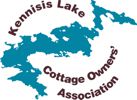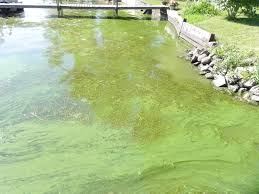Why are we seeing Blooms on our lakes at this time of year. Thus we are sending you the attached Fact Sheet from

Blue Green Algae Blooms in November and December – why
Fact Sheet
- Blue Green algae are always in your lake.
- It is when they bloom that they pose a risk to people, pets and creatures in the lake.
- Blooms will happen when the algae get enough nutrients to enable a bloom.
a. The # 1 Nutrient they need is phosphorous - Phosphorous is available in the water and much more in the sediment at the bottom of
the lake. - The Phosphorous in the sediment is usually tied up and unavailable.
- As the ice off season progresses the Oxygen level in the water decreases. When it gets
too low that triggers a reaction that causes the Phosphorous tied up in the sediment to
release. - Blue Green Alge are the only algae that can travel down thru the water column to access
this released Phosphorus – thus they have it all to themselves with no competition. - This can then result in a Bloom.
In Haliburton County we see increasing number of blooms in November and December
In one case the Bloom froze in to the ice and could be seen all winter!
Actions Recommended
- Keep as much Phosphorous out of our lakes as you can – previously safe levels are no
longer safe. (multiplier impact of Climate Change, Invasive species, loss of Daphnia, longer ice off
season etc.) - To do that we need
o Properly operated and functioning septic systems. (Septics are the #1 source of
Phosphorous in our lakes)
o Natural shorelines with deep rooted native vegetation that intercepts phosphorus
from both septic systems and runoff.
What to do if you suspect a Blue Green Algae Bloom
Take pictures- as high resolution as possible
- Record the location – lake, street address and or GPS
- Notify MOECP Spills Action Line at 1-866- 663-8477 (line operates 24/7)
- Online at https://report- pollution.ene.gov.on.ca/
- Provide the pictures and location info
- Notify your Lake Association so that your Association can let all the members on the lake know
- Lake associations should notify all people on their email list
- Lake Assoc should notify the Mayor, Deputy Mayor & Local councilor
- Lake Assoc should Notify the HKPR Health Department – Bernie Mayer
[email protected] - Tell your neighbours who may not be on the lake association email list
- Do Not
i. Swim in the lake
ii. Let pets or any animals swim or drink from the lake
- Do Not allow water from the lake to enter your house/cottage
i. Most water treatment systems will not safely treat water with a blue green algae bloom
ii. Boiling or chlorinating the water can release toxins into the air
iii. UV filters will not safely treat water which contains a blue green algae bloom - Stop using the water and seek medical attention if symptoms such as skin, eye or throat
irritation, allergic reactions or breathing difficulties occur while in contact with untreated
surface waters. - Do not eat fish caught in the water body. Where to get more information:
- C.H.A. – https://www.cohpoa.org/lake-health-3/algae-and-algal-blooms/
- Ontario Ministry of Environment – https://www.ontario.ca/page/blue-green-algae
Updated September 2023

